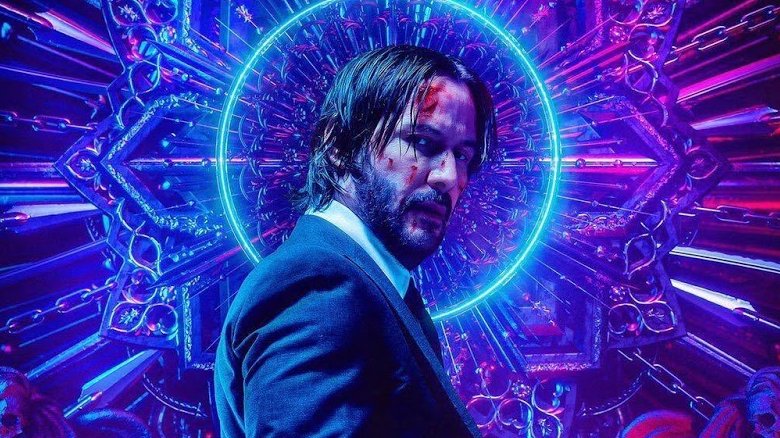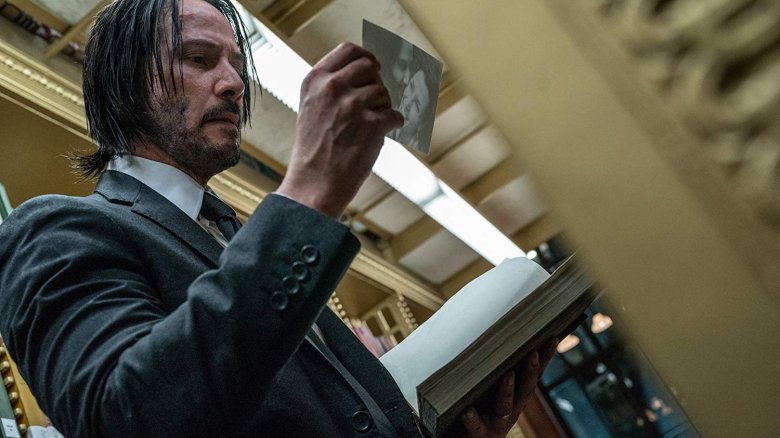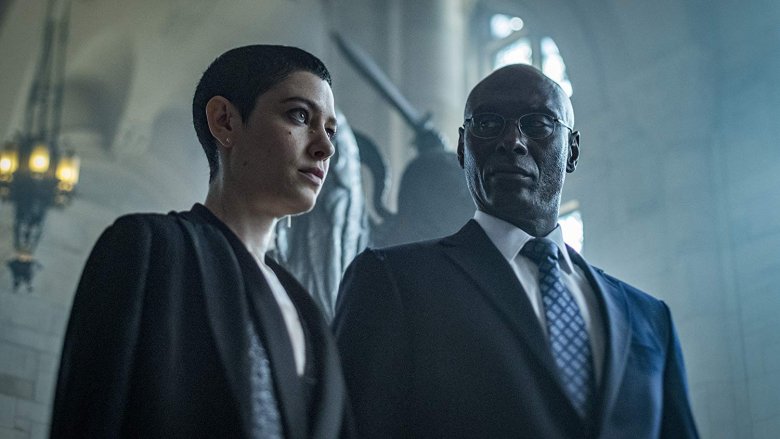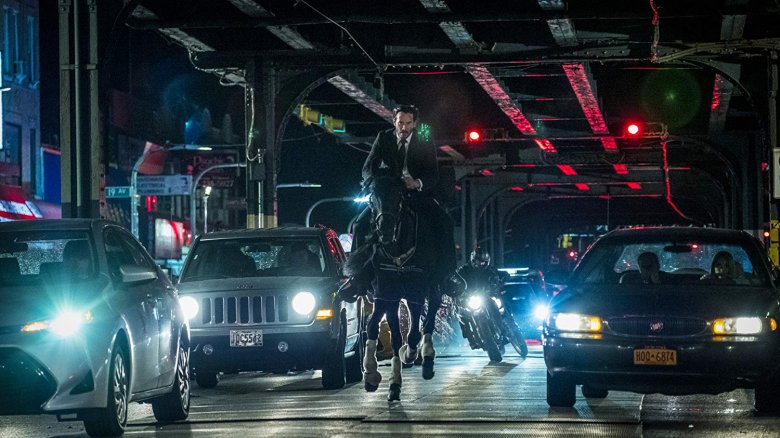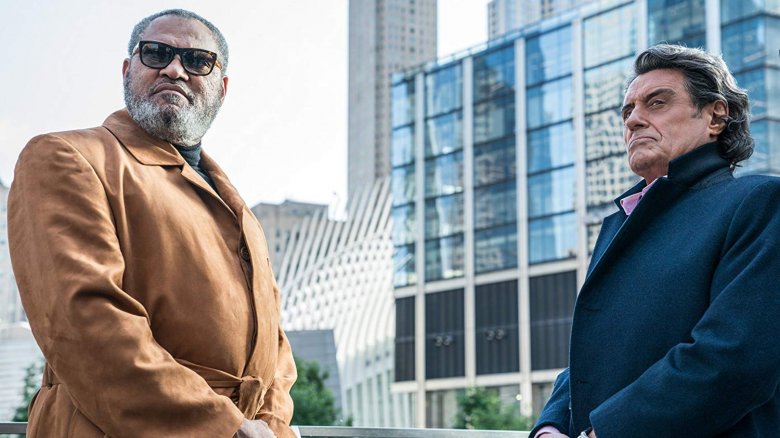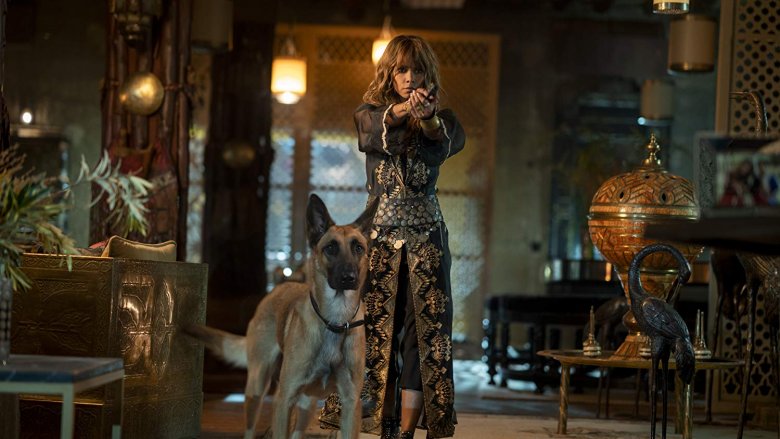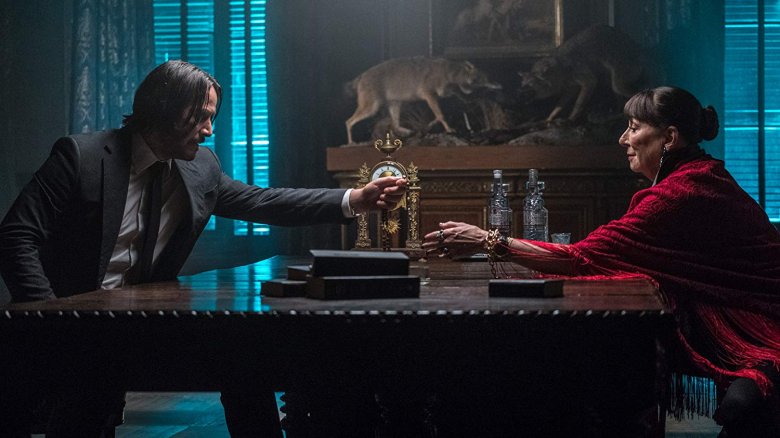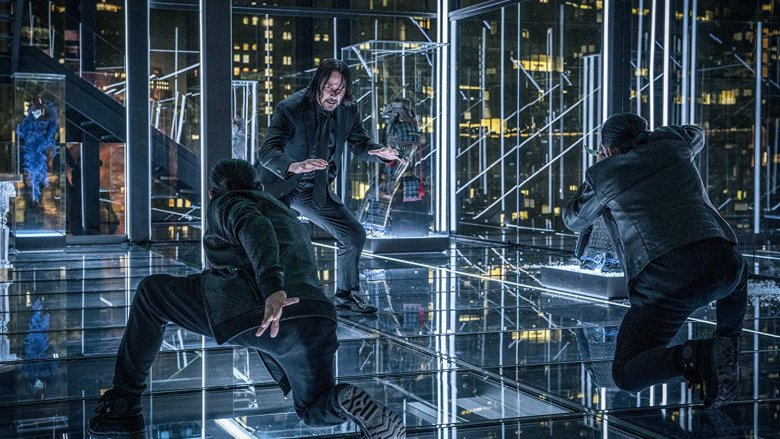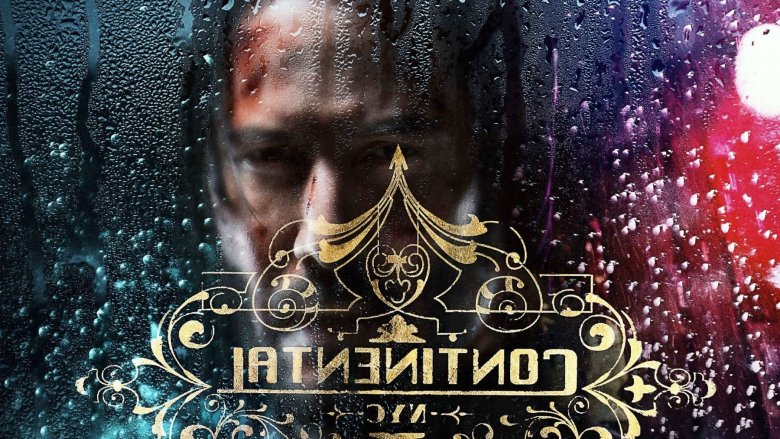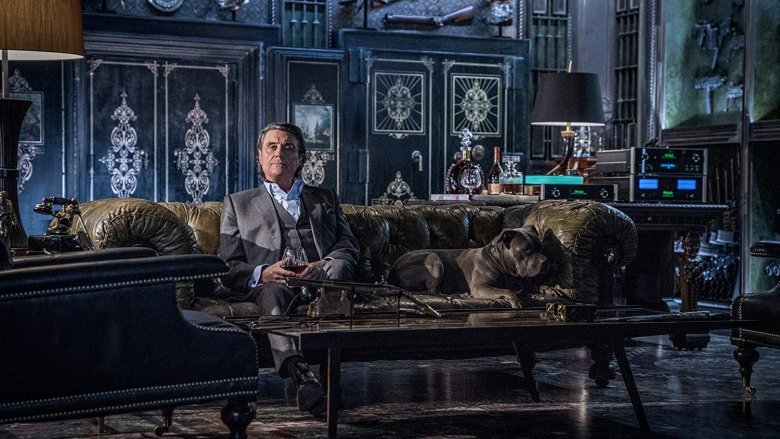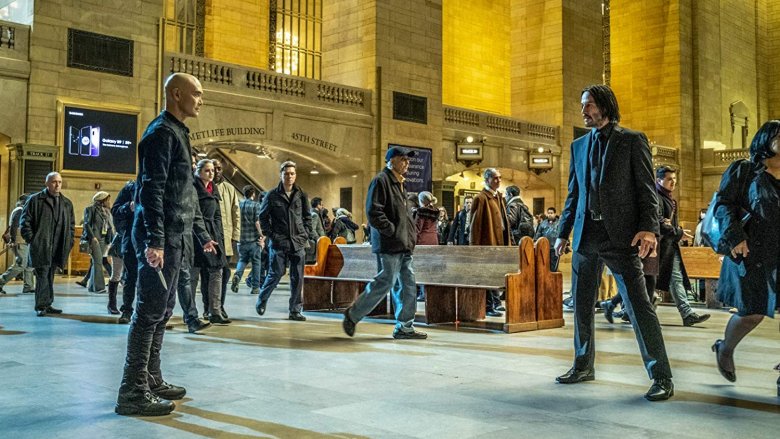John Wick: Chapter 3 - Parabellum's 5 Best And 5 Worst Things
Picking up just minutes after the last film left off, John Wick: Chapter 3 takes audiences even further into a world of assassins, intrigue, and headshot after headshot. Once again, our guide through this journey is the inimitable John Wick, killer of hundreds — the Baba Yaga himself.
Helmed by returning director and veteran stuntman Chad Stahelski, the third movie in the series — subtitled Parabellum, or in English, "prepare for war" — is a natural evolution for the story of the world's new favorite hitman, essentially the newest episode in his exceedingly dramatic life. We've come a long way from the days of puppy vengeance. Now, in this bone-crunching installment, our stylish and soulful hero is out fighting for his very survival.
While reviews for the sequel have been strong as ever, John Wick: Chapter 3 is not without its flaws, many of which are unique to this installment in the series alone. What did the movie change for the better? What did it try that just didn't work? Let's break down the highlights and lowlights of John Wick: Chapter 3.
Best: The tense mood
Right from the start, Chapter 3 is a movie that feels different, all thanks to the inclusion of a ticking clock element. While it's not like John was being particularly leisurely about conducting business during the previous two movies, he did usually feel like he had some room to breathe. His visits to the Italian tailor or the weapons sommelier had a more relaxed pace, with the anticipatory feel of an athlete suiting up before a big game.
But any sense of leisure is completely out the window in Parabellum, which opens with a John Wick who is on the run, and promptly wounded in one of the movie's first fights. This sense of watching a man with his back against the wall makes the audience root extra hard for the protagonist, as the ever-more-dire circumstances tax his wits and his will to survive.
Even after the man-on-the-run plot is resolved, the movie still ends on a tense note with a thrilling siege on the previously impregnable Continental, putting the good guys in a defensive position as the High Table hits them with everything they've got.
Worst: The Adjudicator
Previous antagonists for John Wick, such as Adrianne Palicki's Ms. Perkins, Common's Cassian, and Ruby Rose's Ares, all made great impressions on audiences. While each character differed in the particulars, they all felt like peers to Wick, sharing a certain sense of professional rivalry, courtesy, and mutual respect. They were calm, cool, and had their own agendas, often feeling like they were starring in their own, equally interesting narratives running parallel to John's, which really helped sell the idea of this sprawling world of workmanlike assassins.
But despite completely embodying a sense of calmness, coolness, and world-building, the third movie's Adjudicator character is a jarring presence. Working on behalf of the mostly unseen High Table, their scenes have a tendency to grind the movie to a halt as they play detective in reaction to events we've already seen unfold.
Unlike other supporting cast members like Winston, Charon, or the Bowery King, the Adjudicator has a serious deficit of character and charm. The only reason they exist is to serve as a threat to John Wick's allies, giving the people who we know like John a reason to continue doing the right thing by him while he's on the run. They feel like a walking plot device, at no point coming across as a realistic person.
Best: Creative action
If there's one thing you absolutely, positively, cannot count as a knock against John Wick 3, it's the incredible action sequences, which are hands-down the best and most creative set pieces in the entire series.
Even more than the previous movies, Parabellum is a fight scene delivery system — and we mean that as a compliment. What keeps the wall-to-wall action from ever getting dull (at least for the most part — more on that later) is the sheer variety going on in these kill-or-be-killed conflicts.
After two movies and roughly two hundred dead enemies, have you become bored with pistol-based gun-fu? Well, how about an elegantly brutal fight in a weapons vault, involving dozens of sharp weapons being thrown at (and into) people? Do you want to see a horse used as a weapon, and then a getaway vehicle? Or would you prefer to enjoy the spectacle of a motorcycle chase? How about seeing the horse versus the motorcycles? And are you at all curious what might happen in a 2-on-1 knife fight when John Wick takes his belt off? The results may surprise you — and they'll definitely keep you engaged.
Worst: Non-Wick action
There is one notable exception to the otherwise sterling action scenes in Parabellum, and that's the movie's weird number of fight sequences that don't involve John Wick.
In a departure from the previous movies in the series, Parabellum cuts away from the hero's story to see what the villains are up to with some frequency, following a team of basically ninjas working on behalf of the Adjudicator doing battle with John Wick's allies. These scenes, which are essentially henchmen vs. henchmen, do occasionally dip into the realm of boredom, since we're simply not invested in the survival of any one combatant.
Watching the bad guys emerge from shadows in the frame like a game of Where's Waldo during these scenes is engaging to a certain extent, but none of these scenes invite the same enthusiasm as a fight featuring John Wick, the only human being we all really want to see get out of this movie alive. While the stuntwork in these scenes is still top-notch, they leave the viewer with a slightly disengaged feeling, not caring about the outcome, like watching a video game play itself.
Best: Sofia and her dogs
The fights that don't involve John Wick may be the weakest parts of Parabellum, but there is one big exception — Halle Berry's Sofia. The put-upon, world-weary dog lover from John's shadowy past is given plenty of room to be established as capable and interesting. Her presence allows for not only the series' first co-op fight, but also an opportunity to get her incredible dogs in on the action.
The involvement of the dogs is satisfying for a number of reasons. Not only do the dogfight moments bring the series full circle, at least when it comes to the puppy thing, it's also just a rare treat to watch trained dogs tear into stunt performers with expert precision while human combatants continue to fight around them. It's interspecies choreography of a rarely seen sort, probably because it looks really difficult to execute.
Rather than stealing the spotlight, or feeling shoehorned in, Sofia holds her own as a totally believable equal to John, never succumbing to any kind of Poochie syndrome. This is at least partly helped by the fact that she doesn't overstay her welcome. She greets our hero by shooting him, gripes at him, helps him kill, like 50 people, and leaves him with one final insult by essentially spitting in his face. And then she dips out of the movie, never to be seen again. It somehow all comes off as charming, and leaves you wanting more.
Worst: Lore overload
The first John Wick has one tight screenplay, keeping things simple while hinting at a tantalizing world just underneath the surface. The second movie deepened this concept, further establishing the rules and the history of this weird, wild underground. The sequel story occasionally veered into the realm of the ludicrous; by the end of the movie, it's fair to wonder if there's anybody in New York City who isn't an international hitman.
But all of this gets significantly escalated in Chapter 3, which expands the world to the point of absurdity. This no longer feels like a heightened but theoretically possible world — it feels like the Hogwarts School of Karate and Bloodshed. Testing viewers' suspension of disbelief are an ever-expanding compendium of significant coins and tokens, a clandestine dance academy/wrestling school run by a crime lord, and obscure rituals of branding and finger-chopping that land with an element of randomness.
At times, the plot turns are so out of step with anything resembling reality that they become downright surreal, such as John's days-long aimless walk through an endless desert. It's all just too much, and you wonder just how much more exotic things can really become. It gets to the point where if the next movie sees John Wick having to go to the literal moon for some reason, you feel like you wouldn't be all that surprised.
Best: Stunts and choreography
From start to finish, John Wick 3 serves up beautifully choreographed, crowd-pleasing, honestly just insane fights that are clear, easy to follow, and immensely satisfying to watch unfold.
It's incredible to see what appears to be accomplished in-camera in this movie. Where lesser action films would disguise fight sequences with hundreds of cuts and rapid editing, Parabellum lets things flow, with stunts proceeding in single shots as though to signal to the viewer that "yeah, we really did that."
It feels like it would almost be impossible to watch John Wick: Chapter 3 without getting viscerally engaged with the action sequences. Despite the fact that dozens of henchmen get wasted in a minute's span during some of these fights, all the hits feel like they have real weight. Whether you're watching John Wick slowly insert the sharp part of a knife into the soft part of an eyeball, or watching Sofia's dogs wreck groin after groin, the impacts feel real, brutal, and piercingly painful. It's just awesome stuff to behold, totally in keeping with the series' mission statement of serving up fantastic fight sequences that put other movies to shame. There's a reason why Parabellum has that pretentious ballet motif — more than ever before, these action scenes come off like precise performances of a violent, dangerous dance.
Worst: The excommunicado resolution
Most audiences walking into Parabellum have had the premise of the movie pretty well spelled out for them, both by the movie's marketing and the resolution of the previous film. The concept is simple: John Wick is on the run. How is he going to escape from New York? With a $14 million bounty on his head at the start, will he ever be safe again?
This is a solid hook to hang a story on, and the idea of John Wick having to escape from New York while all of New York tries to kill him is irresistible. What an awesome movie that would make, right? So it's weird when Parabellum wraps up this compelling plot in pretty anticlimactic fashion, in a way that changes the movie's stakes from very clear to somewhat muddled.
After trudging his way through the desert with a stunning deficit of guidance, John Wick is found and transported, as if by magic, to a summit with an elder of the High Table, with whom he hopes to negotiate in order to nullify the bounty put on his life. Shockingly, this is all granted without a lot of argument and with relative ease — all John has to do is slice his ring finger off, give up some jewelry, and wear a green screen sheath on the phantom digit for the rest of the shoot. Problem solved?
Best: The aesthetics
It's hard to tell exactly when the John Wick movies became the sexiest series in action filmmaking. The first one, with a relatively low budget of reportedly around $20 million, followed our grieving hero as he smashed, stabbed, and shot his way through a series of somewhat grounded locales. Gilded offices, nightclubs, and John Wick's own home are all richly decorated and well-lit, but they're nothing we haven't seen before, with the movie all building up to a quick and dirty showdown at the ugly, rain-drenched docks.
But something got switched up in the second movie, which increasingly started portraying John Wick's New York City as a super-stylish world of infinite mirrors and neon lights. If the first movie follows a descent into the city's fanciful old world underground, the second movie is a trip through a radiant funhouse, both beautiful and bizarre. That's a trend that continues in Parabellum, to the movie's benefit. From the stark sandy hills of an endless rolling desert to the Continental's secret acid trip chamber, decorated entirely with mirrored surfaces and 4K Ultra HD Winamp visualizers, John Wick 3 is a movie in which every location is designed to impress, whether they come off as realistic or not.
Worst: The fanboys
The John Wick movies have always had, at best, just a toe dipped into anything resembling the real world. But the train really leaves the station on that front in Chapter 3.
The most egregious example of the movie getting weird with its realism is the character of Zero, an utterly goony clown of a villain who feels like he walked in from a different movie. Why can't this guy take a single fight seriously? Why is he still yukking it up with a sword sticking out of his body, as he teeters on the precipice of death?
In a weird way, Zero and his comrades almost act as audience surrogates, frequently in awe of just how much of a badass John Wick is. But where did this phenomenon come from? No one in the last two movies spent this much time fangirling it up about how cool John is. They were all business. Sure, they regarded Wick as a figure to be respected and feared, but when it came time to be at odds with him, they fought him like a peer. The dorks John fights in the climax of Parabellum don't convey that sort of vibe at all. We know the world of John Wick is larger than life, but until Parabellum, the characters in that world took things pretty seriously. Now, at least some seem very aware of the fact that they're in an action movie, and it makes for a fourth-wall breaking vibe that doesn't necessarily work.
